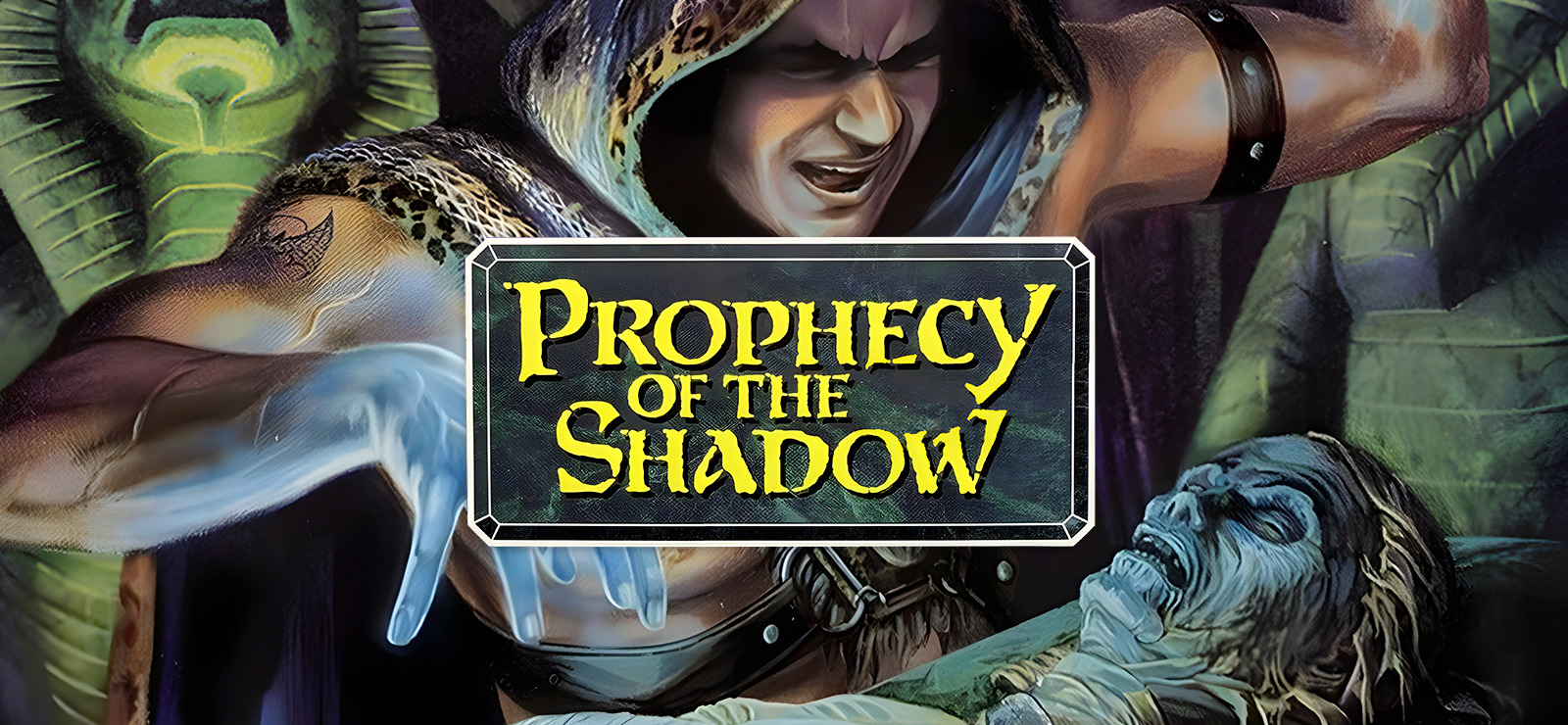Developer: Strategic Simulations
Publisher:Strategic Simulations, Softgold Computerspiele GmbH, SNEG
Genre: Real-Time, Fantasy, RPG
Price: $5.99
Where to Buy: GOG, Steam
Prophecy of the Shadow, released in 1992 for MS-DOS, was a classic fantasy RPG that received mixed reviews but gained a cult following amongst some players.
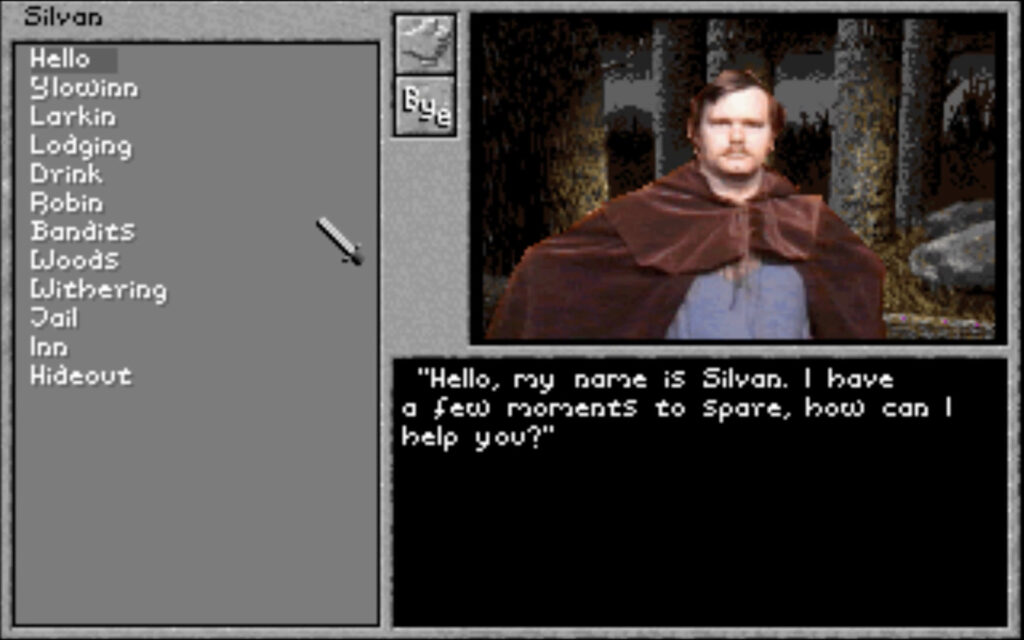
Prophecy of the Shadow offered a glimpse into a bygone era of RPGs, where pixelated heroes battled shadowy forces in a world rendered through the magic of digitized graphics. While not without its flaws, the game’s gameplay presented a captivating blend of action, exploration, and RPG elements, leaving a distinct mark on players’ memories. This essay delves into the strengths and weaknesses of Prophecy of the Shadow’s gameplay, examining its enduring appeal and limitations.
A Thrill in Real Time: Unlike the turn-based battles prevalent in its time, Prophecy of the Shadow embraced the dynamism of real-time combat. The player wielded their weapon directly, parrying blows and unleashing strikes in a dance of steel and sorcery. While not as nuanced as modern action RPGs, this system offered a refreshing immediacy, the thrill of each dodged attack heightening the tension of every encounter. Mastering the rhythm of combat, choosing the right weapon for the foe at hand, and strategically deploying magic added a layer of tactical depth that kept players engaged.
From Novice to Champion: As the hero journeyed through the shadow-haunted lands, their skills sharpened with each conquered foe. Experience unlocked improvements in combat prowess and magical abilities, allowing players to tailor their character to their preferred playstyle. Whether a stalwart warrior carving through foes with a broadsword or a cunning mage slinging spells of fire and frost, the sense of progression felt tangible, rewarding exploration and perseverance.
Secrets within Stone Walls: The world of Prophecy of the Shadow, though not sprawling by modern standards, held its fair share of hidden treasures and forgotten pathways. Dungeons, with their winding corridors and cryptic puzzles, beckoned adventurous spirits. Each crevice held the potential for a hidden lever, a forgotten passage, or a chest overflowing with loot. This inherent curiosity, the urge to uncover the world’s secrets, fueled exploration and added a sense of wonder to the journey.
The Shadow’s Grip: However, Prophecy of the Shadow’s gameplay wasn’t without its blemishes. The repetitive nature of combat reared its head later in the game, as enemy variety dipped and tactical options felt limited. While the initial thrill of real-time action remained, a yearning for deeper strategic complexity or environmental interaction sometimes arose. The linear progression, while clear and engaging, offered less freedom to forge one’s own path compared to later RPGs, leaving some players wanting more from the narrative’s direction.
A Testament to its Time: Despite its limitations, Prophecy of the Shadow’s gameplay holds a nostalgic charm. Its strengths – the immediacy of real-time combat, the rewarding character progression, and the thrill of exploration – shine through the lens of time. It is a testament to an era where innovative ideas blossomed within technological constraints, where developers crafted immersive worlds with limited graphical horsepower.
Prophecy of the Shadow may not stand shoulder-to-shoulder with modern RPG behemoths, but its gameplay remains a captivating artifact of a bygone age. It is a reminder that sometimes, the simplest mechanics, executed with imagination and passion, can weave a spell of adventure and captivate players for years to come.
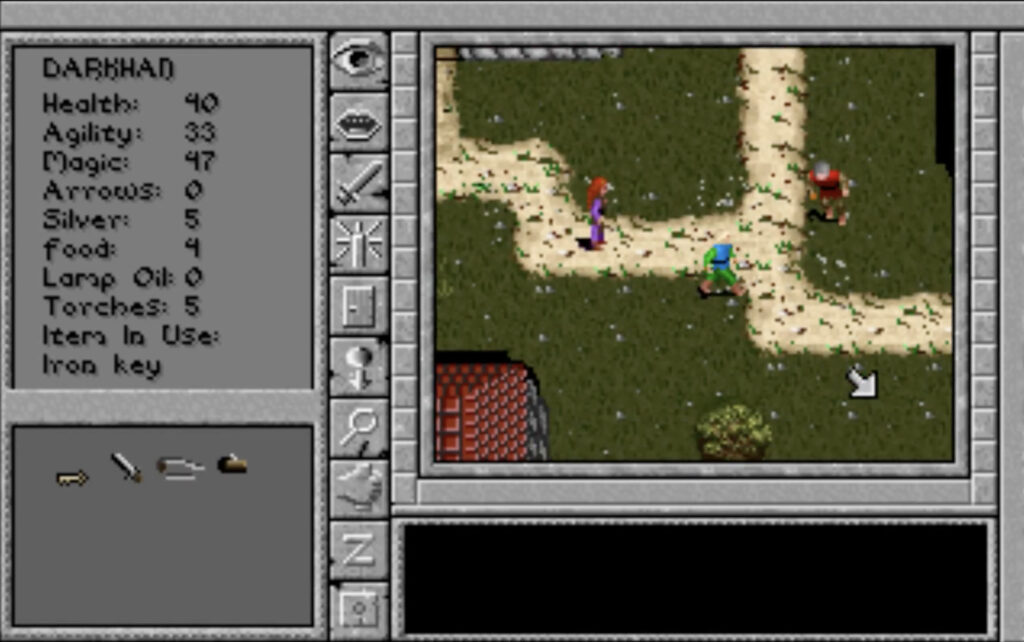
Delving Deeper into Prophecy of the Shadow’s Gameplay:
Combat:
- Real-time action: You wield your weapon directly, slashing and dodging in real-time against enemies. While not as nuanced as modern combat systems, it offered a refreshing change from turn-based battles.
- Weapon types: Swords, axes, hammers, and maces each have unique attack speeds and damage outputs. Finding your favorite weapon was a key part of tailoring your combat style.
- Magic: Spells introduced tactical depth, ranging from offensive blasts to supportive buffs and shields. Managing your limited Mana pool during combat added another layer of strategy.
- Difficulty curve: Starting encounters were easily managed, but the difficulty ramps up progressively, demanding smarter tactics and better gear later on.
Progression:
- Skill system: While not overly complex, you could improve your character’s combat and magical abilities through experience. Specialization encouraged focusing on either swordsmanship or magic.
- Inventory management: Gathering loot, equipping armor and weapons, and managing item weight played a significant role. Finding powerful artifacts and utilizing them strategically could tip the scales in tough battles.
- Town exploration: Towns acted as hubs for buying and selling items, learning spells, and receiving story-driven quests. The main questline was linear, but interacting with townspeople could offer optional side quests and lore tidbits.
Exploration:
- Isometric perspective: You navigated the world from a top-down view, exploring dungeons, towns, and outdoor environments. While the world wasn’t vast by modern standards, it offered a decent amount of hidden secrets and alternate paths to discover.
- Puzzle solving: Environmental puzzles and riddles occasionally blocked your path, requiring some thought and experimentation to overcome. They weren’t overly complex, but added variety to the gameplay.
- Eagle’s eye view: A unique feature allowed you to switch to a bird’s-eye view, scouting ahead for enemies or planning your route through dungeons. This added a strategic element and helped in navigating complex environments.
Overall:
Prophecy of the Shadow’s gameplay, while not revolutionary, offered a satisfying balance of action, RPG elements, and exploration for its time. The lack of enemy variety and branching storylines could become limitations for players accustomed to modern RPGs, but the real-time combat, skill progression, and exploration kept things engaging. It’s a game best enjoyed as a nostalgic classic, appreciating its strengths within the context of its era.
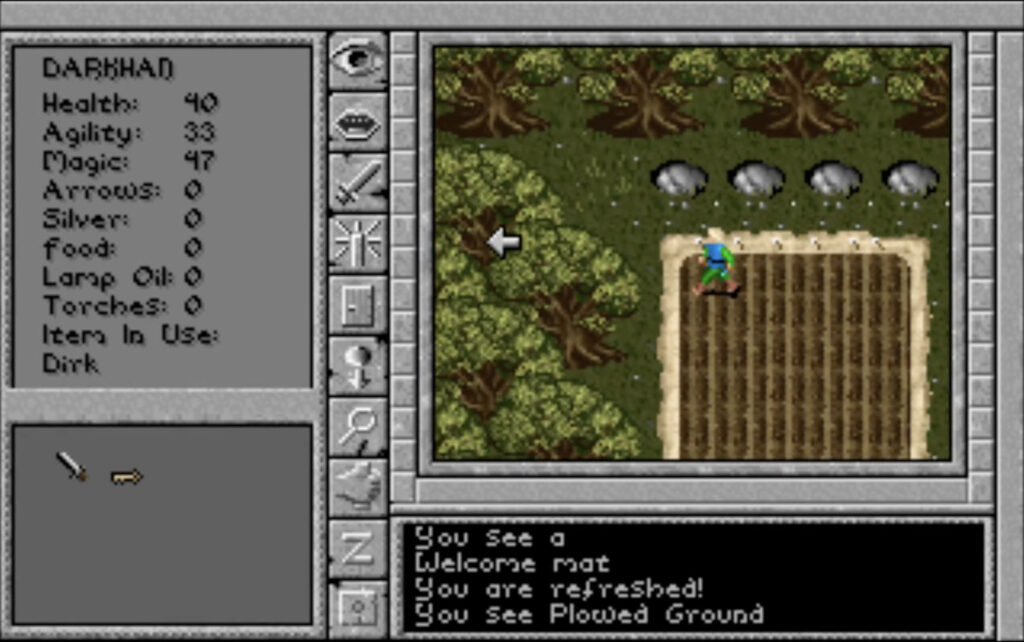
Here’s a breakdown of its strengths and weaknesses:
Strengths:
- Beginner-friendly: The user interface was simple and streamlined, and the character system wasn’t overly complex, making it approachable for newcomers to the RPG genre.
- Captivating Story: The plot, centered on a prophecy and battling the encroaching Shadow Lords, had its fair share of intrigue and twists.
- Real-time combat: Compared to turn-based combat prevalent in RPGs back then, Prophecy of the Shadow offered a more dynamic and action-oriented experience.
- Decent visuals: The game used digitized graphics for character portraits and cutscenes, which was considered cutting-edge technology at the time.
- Immersive atmosphere: The sound effects and music helped create a believable and engaging fantasy world.
Weaknesses:
- Repetitive gameplay: While the real-time combat was initially exciting, it could become repetitive after prolonged play due to lack of enemy variety and tactical depth.
- Linear progression: The main quest didn’t offer much freedom for exploration or branching storylines.
- Technical limitations: Being an MS-DOS game, Prophecy of the Shadow suffered from occasional bugs and slowdowns, frustrating some players.
- Clunky controls: The mouse controls for character movement weren’t always intuitive, requiring some adjustment.
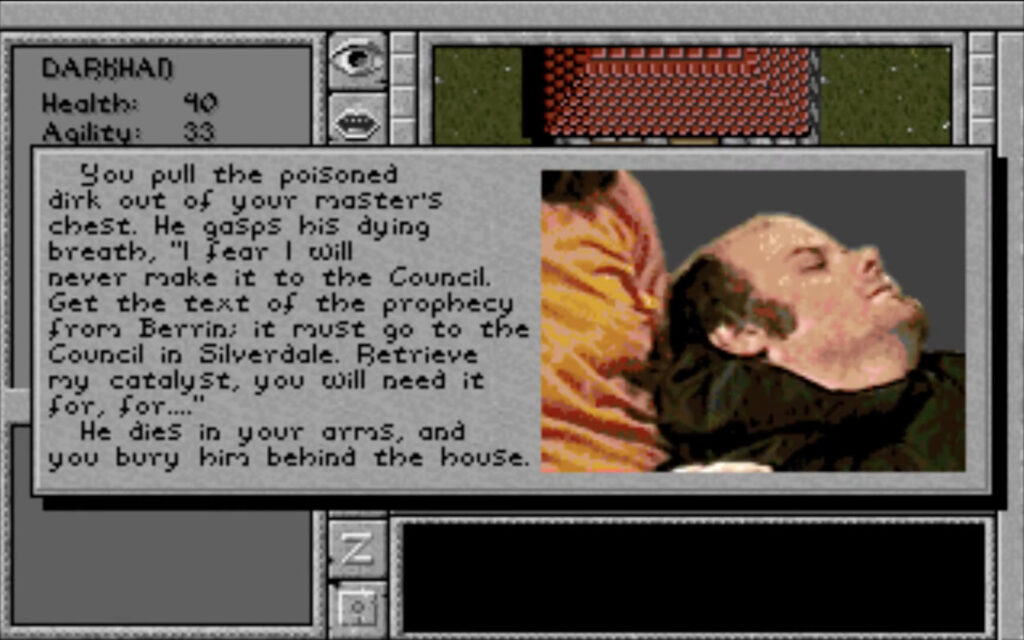
Overall:
Prophecy of the Shadow wasn’t a groundbreaking RPG, but it offered a solid and enjoyable experience for its time, especially for those new to the genre. While the repetitive gameplay and technical limitations might not hold up as well compared to modern RPGs, its engaging story, beginner-friendly approach, and nostalgic charm still hold appeal for retro RPG enthusiasts.
